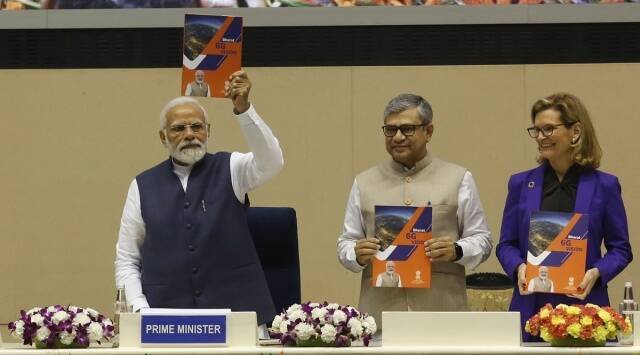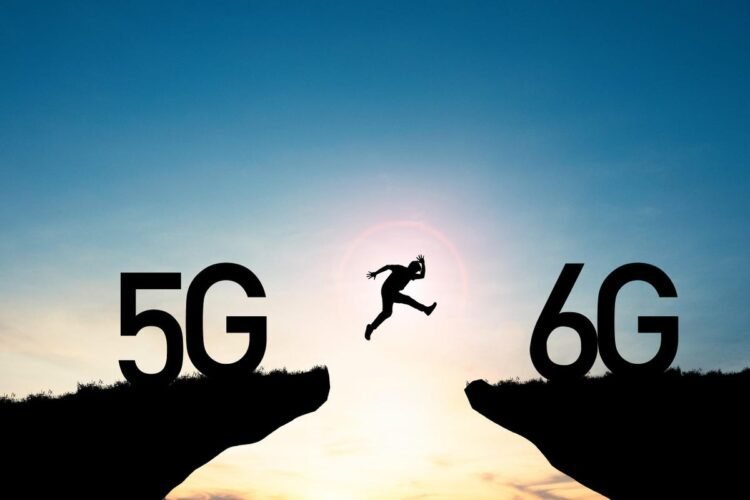India is preparing to roll out high-speed 6G communication services by 2030 and has established the Bharat 6G initiative
Fifth-generation cellular technology is replaced by sixth-generation wireless, or 6G Network. It is expected to be faster, more reliable, and capable of handling more data than its predecessor. The Indian Prime Minister, Narendra Modi, recently inaugurated the new International Telecommunication Union (ITU) Area office & Innovation Centre in India and launched the Bharat 6G Vision Document and the 6G R&D Test Bed.
According to a vision statement released by Prime Minister Narendra Modi on March 22, 2023, India is preparing to roll out high-speed 6G communication services by 2030 and has established the Bharat 6G initiative to discover and support development and implementation of the next-generation technology in the nation.
The government has also appointed an apex council to oversee the project and concentrate on matters like standardisation, identification of the spectrum for 6G usage, creation of an ecosystem for devices and systems, and determining finances for research and development, among other things. India’s 6G project will be implemented in two phases.
The bandwidth and latency of 6G networks will be significantly higher than those of 5G networks due to their ability to operate at higher frequencies. One of the objectives of the 6G internet is to provide communications with a one microsecond latency. This is 1,000 times faster than one millisecond throughput, or 1/1000th the latency.

The aim of this initiative is to provide solutions and innovations for the Global South, creating new opportunities for India’s innovators, industries, and startups, and strengthening cooperation and collaboration in the IT sector of South Asian countries.
The ITU is the United Nations’ specialized agency for information and communication technologies (ICTs), and its presence in the region is expected to help introduce advanced technologies, improve capacity development, and foster entrepreneurship and partnerships while responding to leads on the ground from digital services, skills, cybersecurity, and digital inclusion.
The Indian government’s efforts in this direction have become a matter of discussion all around the world, and the Prime Minister noted that digital technology is universal in India and accessible to everyone, making digital inclusion happen on a large scale in the country in the last few years.
Telecommunications technology has become a crucial part of India’s development and growth, and the government has recognized its potential to empower the country’s citizens. Govt has said that the telecom technology for India is not a mode of power, but a mission to empower. India mphasizing that telecommunications technology is not just a tool to wield power but rather a mission to bridge the digital divide and create opportunities for all.
India has been rapidly moving towards the next step of the digital revolution, with an increasing number of people accessing the internet through mobile devices. The COVID-19 pandemic has further accelerated digital adoption in the country, and the government’s push towards digitalization has contributed to this growth. The Digital India program, BharatNet, and National Optical Fibre Network are some of the government’s initiatives to provide broadband connectivity to every citizen in the country.
The Indian government has also released a vision document for the development of 5G technology in the country, which aims to create a conducive environment for the rollout of 5G and sets out the government’s strategy for spectrum allocation, research and development, and security. The government hopes that this document will also form the basis for the development of 6G technology in the future.
India has been actively collaborating with other countries to develop 5G technology and promote its adoption across the globe. The Atmanirbhar Bharat initiative aims to make India self-reliant in various sectors, including technology, and the government’s focus on innovation and technology-led development is expected to drive further growth in the coming years.
6G networks will offer significant improvements over previous generations, including:
- Use of new spectrum bands for larger capacity and peak data speeds.
- Very high data transfer speeds, nearly double that of 5G.
- Ultra-low latency network functions for improved performance of real-time applications.
- Greater support for machine-to-machine (M2M) connections, targeting 10 million linked devices per square kilometer.
- A focus on energy efficiency to optimize power consumption.
- Greater network reliability, optimizing M2M interactions.
- New architectures for heterogeneous cloud settings.
- Use of AI and ML for optimal connectivity and efficiency.
(India CSR)







